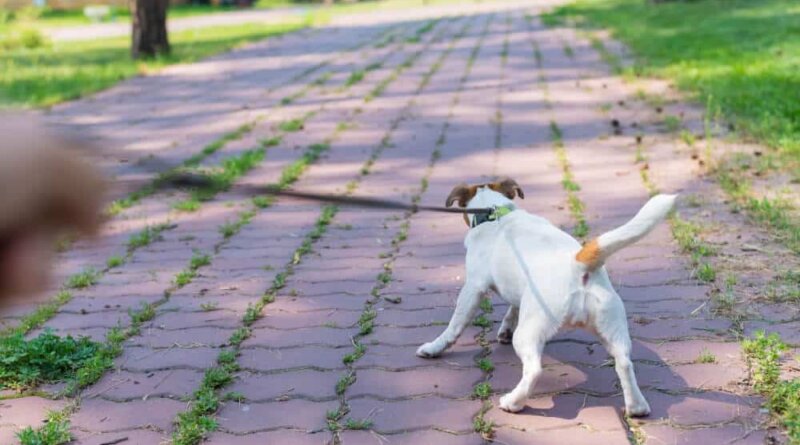How to Stop Dog From Pulling
Prevention Tips for Both Types of Pests
Dogs who pull on their leashes can be a significant annoyance, not to mention a danger to both the dog and the people around them. Fortunately, there are several things you can do to stop your dog from pulling. In this post, we’ll go over some of the best techniques for breaking your dog of this bad habit. Ready to learn how to stop your dog from pulling?
Stopping your dog from pulling requires making sure you have good foundational behaviors in place, obedience training, and plenty of positive reinforcement.
While it is frustrating to have a dog that pulls at the leash, change is possible!
Basic Obedience
Dogs are amazing creatures and make great pets, but they require basic obedience training. If you don’t take the time to train your dog, they may end up being disruptive and challenging to live with. A well-trained dog is happy, so investing in basic training is worth your time. Training a pup to sit, stay, come, and heel might seem too simple. However, if they can master these commands, everything else will fall into place.
Sit
Teaching your dog to sit is a basic obedience command that all dog owners should know how to do. It’s one of the first instructions that most dogs learn and one of the easiest to teach. There are a few different ways to teach your dog how to sit, but whatever method you choose, persistence and patience are key. Keep at it; your pup will sit like a pro before you know it!
Stay
Teaching your dog to sit is a basic obedience command that all dog owners should know how to do. It’s one of the first instructions that most dogs learn and one of the easiest to teach. There are a few different ways to teach your dog how to sit, but whatever method you choose, persistence and patience are key. Keep at it; your pup will sit like a pro before you know it!
Come
Dogs are known for being loyal creatures that love to please their owners. One of the most basic commands a dog can learn is “come.” This command can be handy in and out of the home and for keeping your dog safe while giving them more freedom throughout their daily life.
Heel
With this command, you’ll get more out of every walk because your furry friend won’t lag or pull you forward. Heeling provides a safer dog-walking experience because it reduces the risk of chase and accidents. Dogs that know how to heel are less likely to run into the road and eat toxic materials.
Offer Rewards & Affection
When training your dog, it’s important to offer rewards and affection, particularly when they have walked calmly on the leash. Rewards will motivate them to obey your commands, while affection will help create a bond between you and your dog. Using both of these tools ensures that the training process is a positive experience for both of you.
Do It Immediately
Your dog is like any other human being; they live in the moment. So when responding with treats and affection, you should do so immediately because your pup will most likely not remember what caused this reaction later on down the road!
Eventually Wean Away from Using Treats
When you first start training your pup, use treats as an incentive. Eventually, weaning off these incentives is essential so that they no longer depend on food for their actions but rather prefer doing what we want just out of love and affection!
Consistency is Essential
Your dog is like any other human being; they live in the moment. So when responding with treats and affection, you should do so immediately because your pup will most likely not remember what caused this reaction later on down the road!
Patience is Needed
The process of training a dog can take patience. A dog is often said to be a “man’s best friend,” which is especially true regarding training. Putting in the time and effort required to train a dog properly can result in years of companionship and enjoyment. Though there may be times when it feels like you’re not getting anywhere, continued patience will eventually pay off.
Keep on Correcting
Positive reinforcement is a great way to train your dog, but it’s critical not to make the mistake of thinking you can’t say no. You should correct the behavior if they misbehave and go against what we want them to do.
When you discipline your dog, the goal is to correct their actions while teaching them what it means for things that do not work out well. You want them to understand that certain behaviors have consequences, including being corrected with a positive tone or redirection.

Tools to Assist
Chances are you’ve had to deal with your dog pulling on the leash, and it can be frustrating and challenging to walk your dog when they’re continuously tugging at the leash. Luckily, there are some tools you can use to help train your dog against pulling.
Gentle Leader
The gentle leader moves your dog’s head and body back towards you when he pulls. The nose loop is a great way to stop your dog from barking and pulling while still allowing him the ability to breathe. Using a gentle leader, you can refocus his attention on what’s important and away from distractions.
Halti Collar
The Halti is a popular head collar because it tends to fit more loosely than other styles. This means that your dog might tolerate the device better, and though they all need time to get used to any trainer, some may respond positively if there’s less restriction on their movement.
Get Professional Help
Owning a pet dog can be a wonderful experience. However, owning a pet dog and training that pet dog yourself can sometimes be two very different things. That’s where professional dog trainers come in; they can help you prepare your pet dog to behave in the way you want them to, and sometimes in ways that you may not have even thought possible. Here are some reasons why professional dog training can benefit you and your pet pooch.
-
You Will Learn How to Better Communicate with Your Pup -
Your Dog’s Mind Will Stay Active -
You Will Learn More About Your Dog -
Better Behavior -
You and Your Dog Will Have More Fun Together
Many techniques and tools are available to help you train your dog not to pull. We’ve highlighted a few of the most important ones, but finding what works best for you and your pup is essential. Remember to offer lots of affection and rewards as favorable reinforcement. If you need more help than what is provided here, don’t hesitate to contact a professional trainer. With patience and perseverance, you will have a well-behaved pup who walks nicely by your side in no time! What technique have you found helpful when training your dog not to pull?
The post How to Stop Dog From Pulling appeared first on Cesar's Way.




